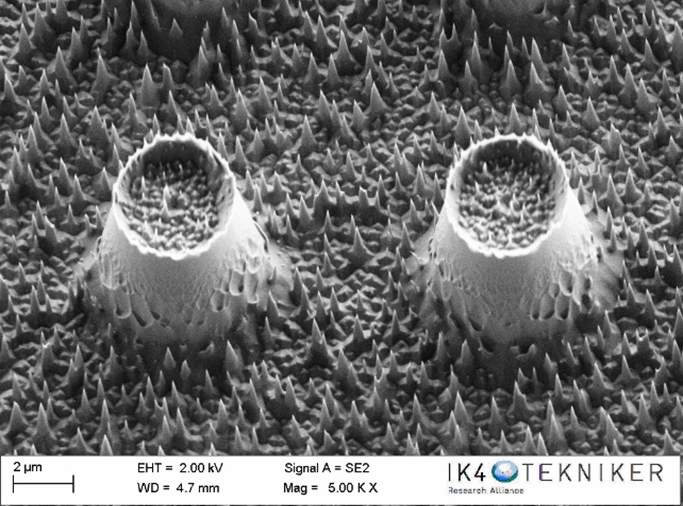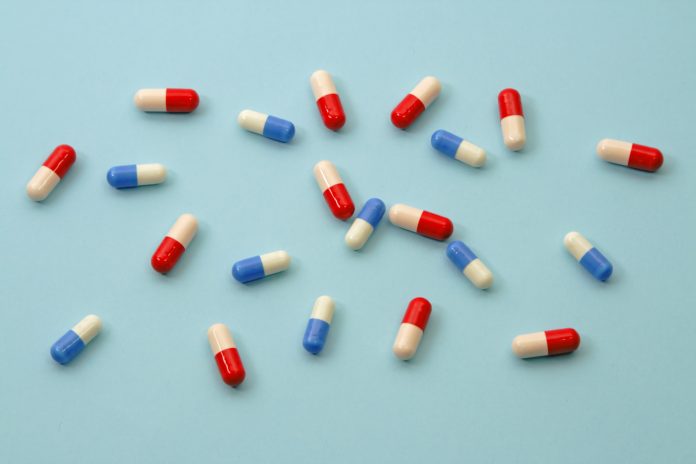The EU-funded project FLEXPOL (GA number 721062) offers an affordable approach to prohibit the spread of bacteria and healthcare-associated infections using cost-effective and sustainable film products
Healthcare-associated infections and diseases induced by multi-resistant bacteria are causing significant numbers of deaths each year within the European Union (EU). To overcome this problem, the FLEXPOL project is developing a low-cost antimicrobial adhesive film to prohibit the spread of bacteria in hospital environments. This product offers a flexible, sustainable and scalable solution to lower the risk of healthcare-associated infections.
Multi-functionality – The interdisciplinary FLEXPOL approach
The FLEXPOL film consists of a three-layered base-material and is made of safe and economical polypropylene (PP). While the outer layers of the film are made from a PP material with a very high stiffness to provide maximum abrasion resistance, the inner layer is made of a PP grade, which is suitable for the introduction of active substances into the film.
Essential oils are incorporated into the inner layer which are able to penetrate the outer polymer surface. As some essential oils are known to have an antimicrobial effect, the release of these oils to the surface of the film will kill bacteria. Due to the fact that essential oils are extremely volatile substances and potentially able to cause allergic reactions, the release must be precisely controllable. To achieve this, the active chemicals are encapsulated into ß-cyclodextrin matrices, which is a special form of carbon-hydrates. The encapsulation and subsequent introduction of the active substances into the polymer matrices allows a stable, controlled release of chemicals, giving the FLEXPOL film a functional life of about six months.
The surface of the FLEXPOL film is characterised by an innovative micro-nano-structure. The combination of micropillars and nanospikes (black silicon) causes very high water contact-angles. This results in highly hydrophobic behaviour and creates a ‘lotus effect’ on the surface. As bacteria need a medium to grow, the absence of water effectively prevents the microorganisms from growing and spreading over the surface. Even before adding the oils to the inner layer, it was already proven that the structure alone has strong antimicrobial characteristics and was able to reduce an initial number of Escherichia coli (E. coli) bacteria by 90% within 90 minutes.
Further testing was done with Staphylococcus aureus – bacteria which offer a potentially high-risk for healthcare-associated infections, due to an increasing percentage of methicillin resistant strains. Even though these bacterial strains are highly resistant, the FLEXPOL film effectuates a high degradation rate in a short period of time.
The combination of both approaches leads to a product, which on the one hand is able to suppress the attachment and growth of bacteria on the covered surface by the topography and on the other hand actively kills bacteria by the introduced essential oils.
Sustainability – The environmentally friendly and safe use of the FLEXPOL film
In comparison to state-of-the-art antimicrobial film products, the FLEXPOL approach offers significant advantages. Most commercially available antimicrobial films rely on active nanoparticle substances like silver-ions. However, the consequences of nanoparticle deposits once they enter the human body is not fully proven yet. The raw-material polypropylene used in FLEXPOL’s film however, is the same as that used in food-packaging applications.

The active substances, vaporising from the film are essential oils from natural resources like oregano or thyme. In order to prove any potential risks of the FLEXPOL film, cytotoxicity tests were carried out frequently during the course of the project. None of the tested combinations of topography and active substances showed cytotoxic behaviour in the in-vitro tests. Thus, the film can be considered as a safe-to-use material.
Scalable solution – The key-enabler for everyday use
The goal of the FLEXPOL project is to invent a highly functional material, combined with a low-cost production process in order to make it affordable for everyday applications. The applied polypropylene grades for film production are commercially available and extruded in a blow-extrusion process, capable of throughputs of hundreds of meters per hour.
Subsequently, the hierarchical surface structures are introduced by a roll-to-roll hot-embossing process, offering a high-throughput without the need for additives like UV-curable resins. For large-scale production, the costs of the FLEXPOL film have the potential to almost decrease to the costs of just the raw materials. This is a key enabler to make it affordable as a standard solution in hospitals.
Readiness – How close is the FLEXPOL film to the market?
The FLEXPOL project (EU-funded until December 2019) is currently in a pre-market state. Certainly, the antimicrobial efficiency has been validated in-vitro and the production process has been successfully implemented. A final validation in a hospital environment will show the efficiency of the film in real-life conditions. The complete production process is carefully traced and documented by a shared database, in order to enable the targeted certification as a class-one medical device.
Maximilian Kosel
Project Manager
Fraunhofer Institute for Production Technology
Tel: +49 241 8904 270
maximilian.kosel@ipt.fraunhofer.de
*Please note: This is a commercial profile











